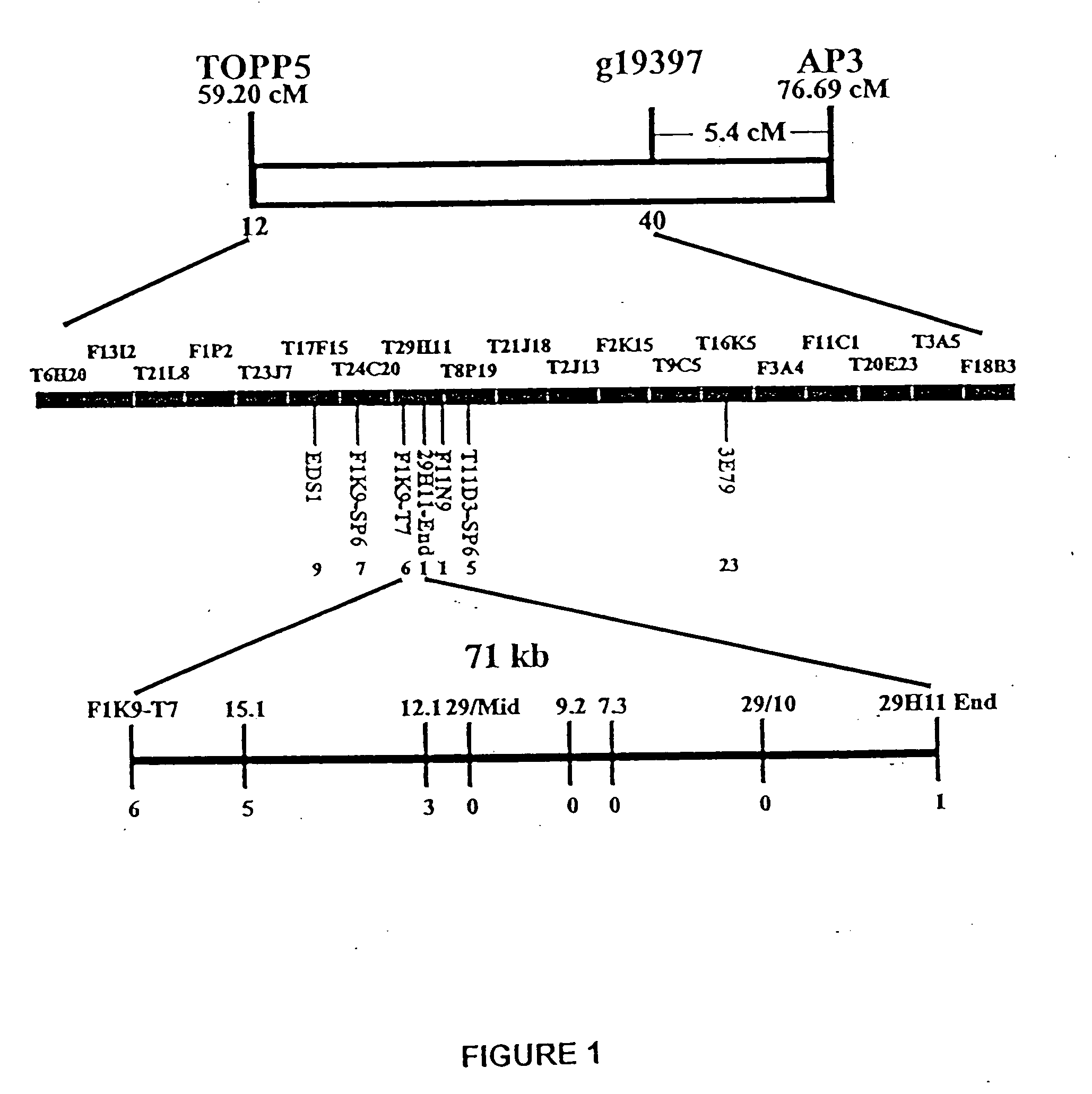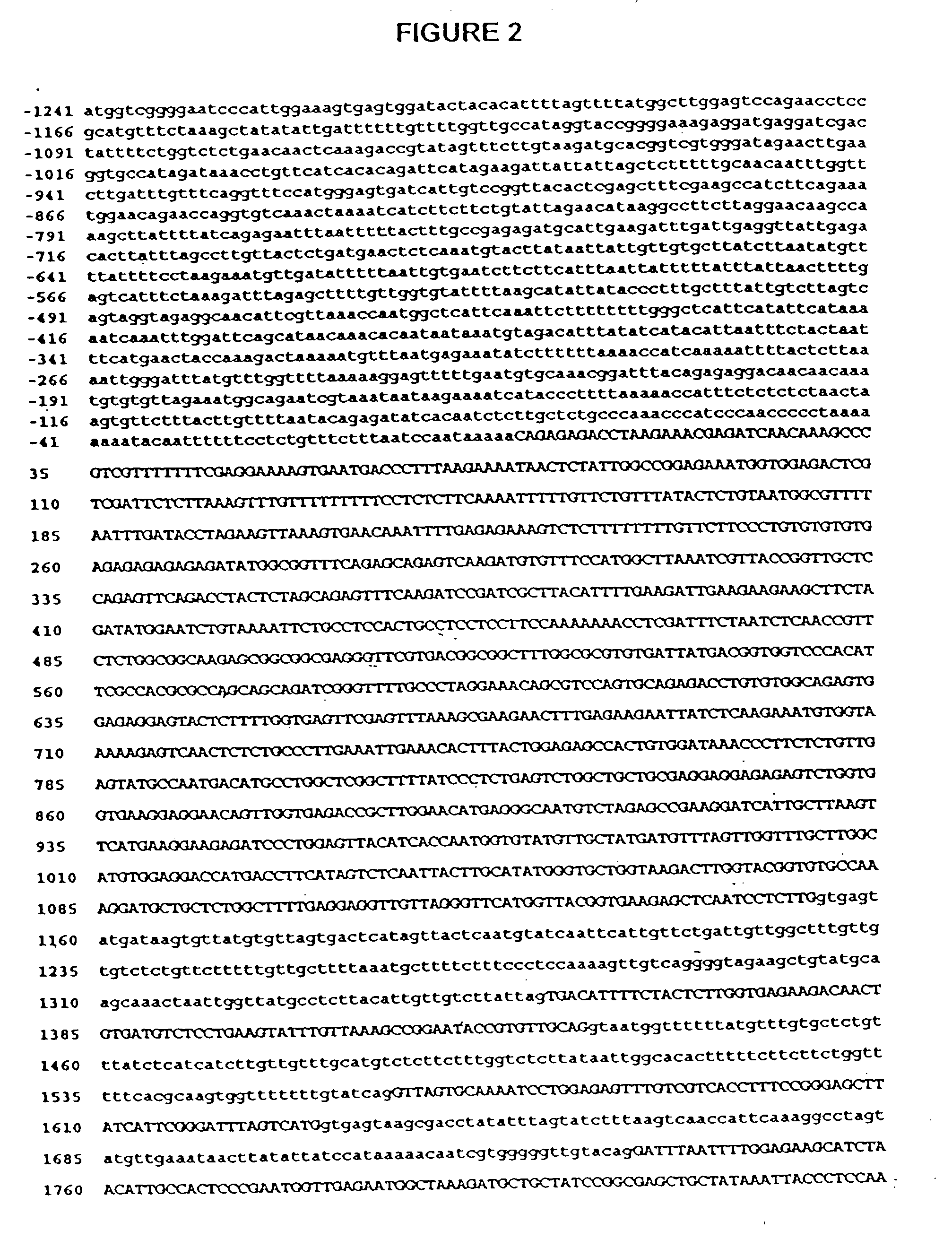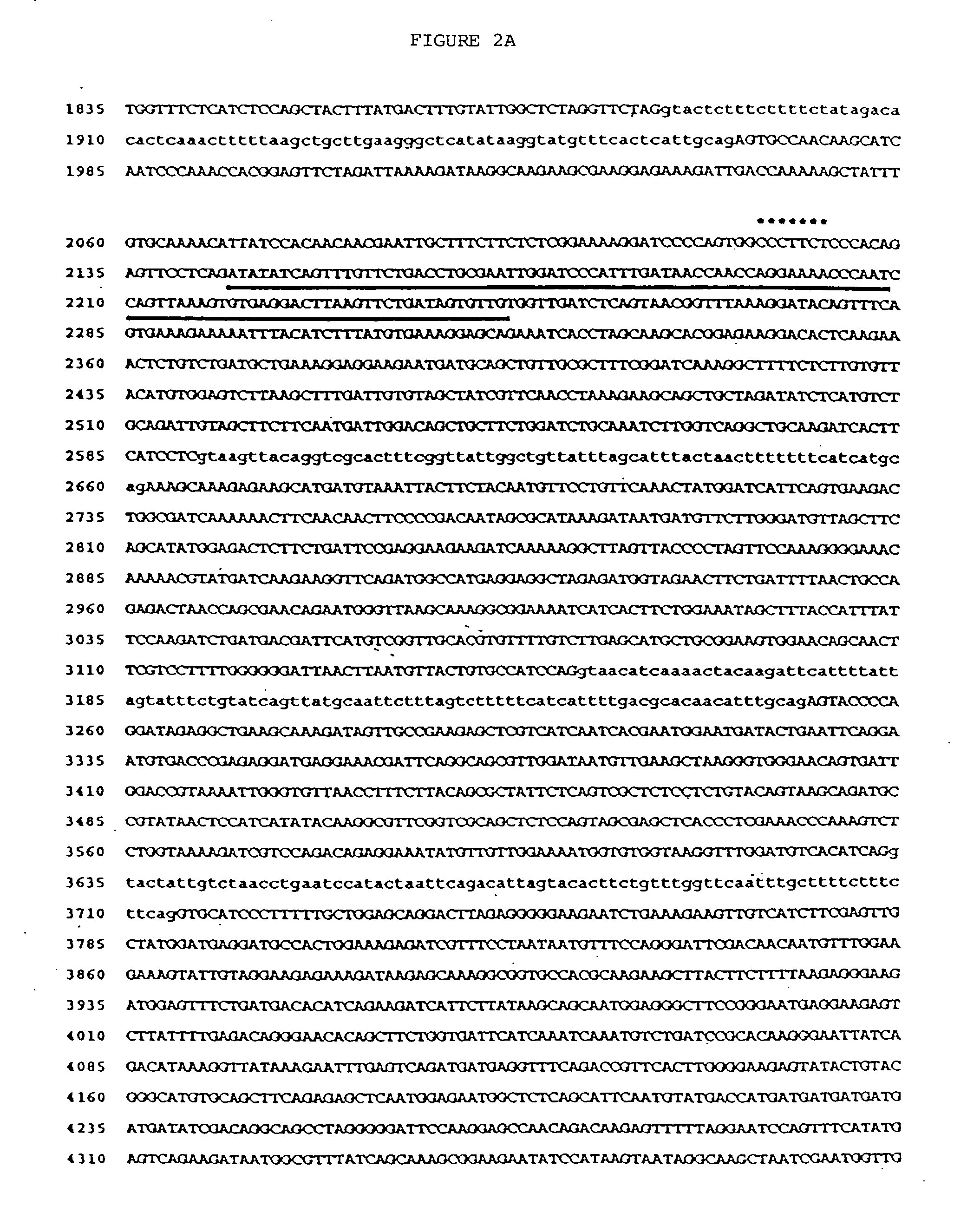Ethylene insensitive plants
a technology of insensitive plants and ethylene, which is applied in the field of plants and plant genes, can solve problems such as entanglement in the study of this mutation
- Summary
- Abstract
- Description
- Claims
- Application Information
AI Technical Summary
Benefits of technology
Problems solved by technology
Method used
Image
Examples
example 1
Mapping of the Ein6 Locus
[0150] The EIN6 gene was isolated from a population of fast neutron-mutagenized plants, and was originally mapped to the bottom of chromosome 3, 17.6 cM north of ngal 12 (Roman, G. et al. (1995) “Genetic analysis of ethylene signal transduction in Arabidopsis thaliana: five novel mutant loci integrated into a stress response pathway” Genetics 139(3): 1393-1409). Further mapping indicated that the gene was located farther north, located in a ˜12 cM interval between the markers TOPP5 and g19397 (FIG. 2). The acetolactate synthase gene is located in this interval, and was used to screen bacterial artificial chromosome (BAC) libraries to identify BAC clones in this region. Additional markers were developed from cloned genes in the region and BAC end sequences obtained from TAIL-PCR clones and the Arabidopsis Genome Initiative.
[0151] Using these markers, EIN6 was mapped on an F2 population of 496 plants. It was found that the closest flanking marker to the nort...
example 2
Identification of the Ein / 6 Mutation
[0152] Although the ein6 mutation was induced by fast neutrons, no evidence of a deletion was observed when genomic Southern blots of the mutant were probed with F3E7, a BAC that overlapped this region (data not shown). Using the genomic data available, a novel approach was undertaken to identify the mutation in the EIN6 gene. Denaturing High Performance Liquid Chromatography (DHPLC) is a technique that is capable of identifying single base mismatches in double stranded DNA (O'Donovan, 1998). Primers were designed to amplify overlapping ˜500 bp PCR fragments that covered the 44 kb interval between the two closest recombinant markers. PCR fragments that contain no mismatches elute from the DHPLC column as single peaks. In the event that a mismatch is present in a particular fragment, multiple peaks are observed. Multiple peaks were only observed for a single fragment contained within the interval. Sequencing of this fragment from both wild type an...
example 3
The Original Ein6 Mutation is Two Genes
[0153] The original mutation ein6 had been characterized as a recessive mutant, which conferred, reduced fertility. Backcrosses of ein6 mutant plants to the parental line Lansberg Erecta (Ler) yielded interesting results. Upon careful analysis of the F2 seedlings grown in an ethylene precursor, three phenotypes were seen. Two were those that had been seen before, wild type and ethylene insensitive (ein-like). The third was a weak ethylene insensitive phenotype, with only an ethylene insensitive root (eir-like). The numbers of each class were counted in the F2 population. They corresponded to the following ratio: 12:3:1, with 12 / 16 of the plants being of the wild type (triple response) phenotype, 3 / 16 of the plants being of the eir (ethylene insensitive root) phenotype, and 1 / 16 of the plants being ein (ethylene insensitive) phenotype. Each of these classes were genotyped for the ein6 mutation. All of the ein-like and eir-like plants turned out...
PUM
| Property | Measurement | Unit |
|---|---|---|
| temperature | aaaaa | aaaaa |
| time | aaaaa | aaaaa |
| elongation | aaaaa | aaaaa |
Abstract
Description
Claims
Application Information
 Login to View More
Login to View More - R&D
- Intellectual Property
- Life Sciences
- Materials
- Tech Scout
- Unparalleled Data Quality
- Higher Quality Content
- 60% Fewer Hallucinations
Browse by: Latest US Patents, China's latest patents, Technical Efficacy Thesaurus, Application Domain, Technology Topic, Popular Technical Reports.
© 2025 PatSnap. All rights reserved.Legal|Privacy policy|Modern Slavery Act Transparency Statement|Sitemap|About US| Contact US: help@patsnap.com



